#bulgarian bishop
Text
Cloud: The main thing that puts me off of playing chess is that there is 2000 years of gameplay that hundreds of people with higher IQs than me have spent thousands of hours studying the history of, so much so that when i put the pawn forward they say “ah ii see you’re going for the bulgarian somersault” and then i try to take their bishop with my knight and they go “aw, rookie mistake, you’ve played the frenchmans cumsock, and in approximately 37 moves I’ll have won”.
10 notes
·
View notes
Text
Game Night (2018)
🎲💥🌌
This modern action comedy is about a group of friends, whose weekly game night suddenly becomes a real mystery when one of them is abducted.
Jason Bateman and Rachel McAdams star as married avid gamer couple Max and Annie Davis. The supporting cast includes: Jesse Plemons as police officer/next-door neighbor Gary Kingsbury, Billy Magnussen (aka Jed Milgrim/Grimsson on Netflix’s Maniac), as Max and Annie’s friend Ryan Huddle, Sharon Horgan (aka Eva Garvey on Bad Sisters) as Ryan’s co-worker/love interest Sarah Darcy, Lamorne Morris (aka Winston Bishop on New Girl) and Kylie Bunbury as high school sweethearts Kevin and Michelle Sterling, Michael C. Hall (aka Dexter Morgan) as a dangerous arms dealer known as The Bulgarian and Kyle Chandler as Max’s brother Brooks Davis. A crucial animal character in the film includes Gary’s West Highland Terrier named Bastian.
Jason Bateman and Rachel McAdams make a great team creating the perfect balance between wry eagerness and deft wordplay, which can be twice as fun to watch. Jesse Plemons sure knows how to make an audience laugh without even trying to be funny, hence his ability to play a straight-faced character. Billy Magnussen is especially hilarious given that his character (who initially brought a different date with him on game night) is an outgoing gamer who’s also quite dumb. Kyle Chandler has literally got his game face on playing an ultra-competitive alpha male.
In terms of observing the competitive streak of the film’s principal characters, Max and Annie’s relationship is essentially built around their intense love of games. Jesse Plemons’ character is an intensely strange person who, after his wife left him, desperately wants to be invited to the extent that he gradually resorts to subtle (and comedic) underplay. Brooks is a highly successful guy who not only takes game night up a notch, but he takes great pleasure in beating his brother every opportunity he gets (hence, Max’s sibling rivalry literally throws him off his game and is thus unable to conceive a baby with Annie).
The script is insightfully written in both skill and originality, setting the stage for a convoluted narrative that advances to the next level of dark comedy and unforeseen thrills. One moment, you’re in for a legit role-playing murder mystery, but the next you’re caught up in life-threatening situations involving real criminals.
Throughout the course of the movie, references to real-life board/party games are clearly implied. A few examples include: Guess Who? (Kevin and Michelle’s argument on which “celebrity” the latter slept with), Operation (the impromptu surgery in which Annie removes a bullet from Max’s arm) and “Hot Potato” (the scene where the group toss a Fabergé egg from person to person while being chased by guards). What’s more, some three-dimensional aerial camera shots of the city/neighborhood allude to the Game of Life, a clear nod to a “game-within-a-game” concept.
The soundtrack contains a selection of classic songs that fit conveniently into the film. Such specific tracks range from Queen’s “Don’t Stop Me Now” to Engelbert Humperdinck’s cover version of “Quando Quando Quando”.
Finally, underneath the over-the-top comedy and overall adrenaline rush is the idea of just enjoying the things you plan. I recommend this unexpectedly winning (though criminally underrated) cinematic romp to everyone.
“YES! OH NO, HE DIED!”
-Annie Davis
#game night 2018#black comedy#action thriller#crime thriller#john francis daley#jonathan goldstein#jason bateman#rachel mcadams#max and annie davis#jesse plemons#billy magnussen#lamorne morris#kylie bunbury#Bastian the dog#the Bulgarian#faberge egg
8 notes
·
View notes
Text
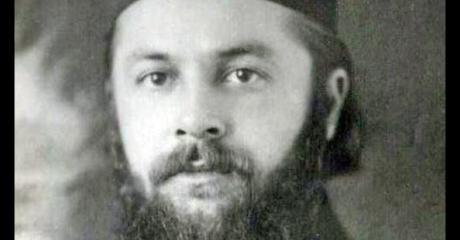
The Brave Bulgarian Bishop: Metropolitan Kirill
Shouted lines from the Book of Ruth.
Metropolitan Kirill was a bishop of the Bulgarian Orthodox church who defied his own government and risked his life to stop the deportation of Bulgarian Jews to Nazi death camps.
During World War II, the Bulgarian government was an ally of Nazi Germany. Early in 1943, Bulgaria signed a secret agreement with the Nazis to deport 20,000 Jews. In one terrible week, March 4-March 11, soldiers arrested thousands of Jews and kept them in makeshift holding pens while they prepared the cattlecars to take them to Treblinka, an extermination camp where 850,000 Jews were murdered.
Word got out, and there were protests across Bulgaria. Leaders of the Bulgarian Orthodox Church were quick to speak out. One bishop, Metropolitan Kirill, from the city of Plovdiv, did more than speak out.
As soon as the deportations began, Kirill sent a personal telegram to Bulgarian King Boris begging for his mercy towards the Jews. He also warned local law enforcement that if they participated in the murderous round-ups, Bulgarians would stop recognizing their authority. Kirill had the full support of Metropolitan Stephan of Sofia, the highest ranking Bulgarian church official.
On March 10, 1943, 8500 Jews, including 1500 from Plovdiv, were loaded into boxcars. Before the train could leave, Kirill showed up at the station with 300 church members. The bishop pushed through the officers guarding the area and approached the boxcars. As he reached them, he yelled out lines from the Book of Ruth: “Wherever you go, I will go! Wherever you lodge, I will lodge! Your people will be my people, and your God, my God!”
Kirill opened one of the boxcars and tried to enter but SS officers stopped him. At this point, Kirill declared his intention to lie on the tracks to stop the train from leaving. Members of his church got the word out about Kirill’s brave stance, and soon all of Bulgaria knew of the bishop willing to lay down his life to prevent the murder of innocents.
The impact of Kirill’s action was immediate. That same day, 42 members of Parliament rebelled against the government. Political leaders from all parties proclaimed their solidarity with Metropolitan Kirill and the Jews of Bulgaria, and sent angry letters to government ministers demanding the persecution end.
The next day, the Jews were freed and allowed to return home. The danger to Bulgarian Jews was not over, however. King Boris wanted to continue to ally with the Nazis, and he arranged a meeting with religious leaders to support Nazi policies against the Jews. He told them that patriotism demanded they support their king, but the bishops stood firm. Boris’ sudden death in September 1943 stopped the deportations permanently.
The people of Bulgaria’s refusal to tolerate anti-Jewish persecution was unique in Europe. At the beginning of the war, there were 48,000 Jews in Bulgaria; when the war ended, there were 50,000. Bulgaria was the only country under Nazi rule that had more Jews after World War II than before.
For putting his own life at risk to save thousands of Bulgarian Jews, we honor Metropolitan Kirill as this week’s Thursday Hero.
21 notes
·
View notes
Note
k so i have a screenwriting project for drama, 30 min short film, i have like Some ideas but they're not good. you mention in my notes that in Romanian folk Christianity that God created Satan because he was lonely, that's compelling, could you share more? Could you give me research jumping off points?
Hi, sorry it took me a moment, but, again, craziest week in a while and it's not even because of DW.
But yeah, there appears to be a general idea of some kind of fraternal/co-creative relation between God and Satan in some folk Christian traditions. Arguably it's more the case of older myths getting a Christian makeover (sth sth Odin and Loki being blood brothers). Still, we end up with Satan and God hanging out amicably by the sea while bishops excommunicate each other over whether the Holy Spirit comes directly from the Father through the Son or simply from the Son.
The guy where I got this from was Mircea Eliade and he sort of applies jungian psychoanalysis of collective unconscious to religion. The specific essay is available on Internet Archive (my beloved) on pages 78-124. It's titled Mephistopheles and the Androgyne or mystery of the whole. Just fair warning, Eliade was writing in the first half of the 20th century and some of his vocab may be... not on par with modern sensitivities especially on Tumblr? He's not intentionally insulting or anything, just uses words like "gipsi" or presents male and female as discrete opposites or his information may be more anecdotal than thoroughly researched. So just. fair warning. It's brilliant in terms of finding general stories and their interpretations, so I hope it will be useful.
Some good bits (sorry, no quotes, the pdf is not editable):
Romanians have God and Satan be brothers or Jesus and Satan both be children of God
Ethiopians have a Saint and Devil-Woman be siblings (he ends up praying to Jesus for strength to murder his sister)
Peoples of Altai have God create the Devil by spitting on the Waters after exclaiming "If only I had a brother, I would make the World!". Then Satan suggests they be brothers and create tWorld together, but God answers "We will not be brothers but companions"
Romani of Transylvania have God be "unhappy alone" and admitting They don't know how to create the World, hence creating the Devil
Finnish version has God ask Their reflection in Waters how to create the World
Bulgarians dead ass have God see their shadow and tell it "Get up, comrade!" Satan then asks God to split thr Universe between them
Bottom line: knowing that this is the shit I've been into since I was a teenager, imagine what finding thoschei and especially tensimm did to my brain.
#always happtmy to infodump#mircea eliade#philosophy in doctor who#thoschei#yes i'm tagging this as those pathetic morons archetypes manifest in many forms
7 notes
·
View notes
Text

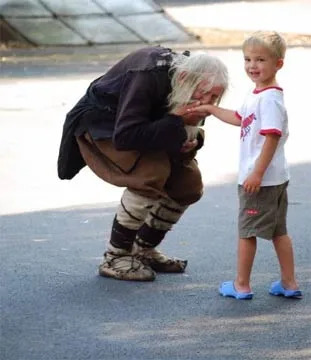
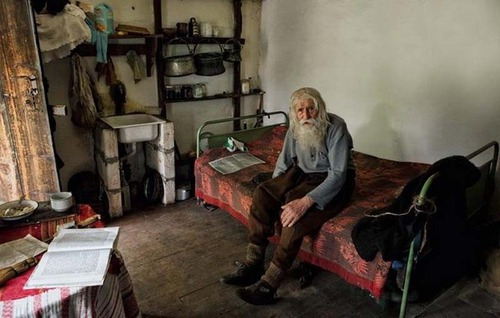
“Four years ago, I had the pleasure to meet him and directly delight in his innocent kindness and simplicity. People from Sofia know him as Elder Dobri Dobrev from the village Baylovo. He is a 96 year old elder who could often be seen standing in front of the church St. Alexander Nevsky or St. Methodius and Cyril and their five disciples with his metal cashbox and begging for money. He gives the collected money for renewing of the monasteries and churches or to poor people.
I met him at the Church of St. Kyriaki, when I was attending the Holy Liturgy which was led by several bishops, in the presence of the graceful relics of St. Stephen Milutin the King. Simply, he entered through the church gate, stood in front of the relics and, as a young boy, made a few deep bows [prostrations]. That was an amazing scene, especially because of the feeling of unworthiness when God crosses our life-path with one of His righteous men."
— Maran Ata on Bulgarian Elder Dobri, a holy man of God (x)
34 notes
·
View notes
Text
Saints&Reading: Wednesday, June 27, 2023
june 27_june 15
SAINT JONAH, METROPOLITAN OF MOSCOW AND WONDERWORKER OF ALL RUSSIA (1461)

Saint Jonah, Metropolitan of Moscow and Wonderworker of All Russia was born in Galich into a pious Christian family. The father of the future saint was named Theodore. When he was only twelve, the youth received monastic tonsure in one of the Galich monasteries. From there, he transferred to the Moscow Simonov monastery, where he fulfilled various obediences for many years.
Once, Saint Photius, Metropolitan of Moscow (May 27 and July 2), visited the Simonov monastery. After the Molieben, he blessed the archimandrite and brethren and wished to bless those monks fulfilling their obediences in the sanctuary.
When he came to the bakery, he saw Saint Jonah sleeping, exhausted from work. The fingers of the saint’s right hand were positioned in a gesture of blessing. Saint Photius said not to wake him. He blessed the sleeping monk and predicted to those present that this monk would be a great hierarch of the Russian Church and would guide many on the way to salvation.
The prediction of Saint Photius was fulfilled. Several years later, Saint Jonah was made Bishop of Ryazan and Murom.
Saint Photius died in 1431. Five years after his death, Saint Jonah was chosen Metropolitan of All Russia for his virtuous and holy life. The newly-elected Metropolitan journeyed to Constantinople to be confirmed as Metropolitan by Patriarch Joseph II (1416-1439). Shortly before this, the nefarious Isidore, a Bulgarian, had already been established as Metropolitan. Spending a short time at Kyiv and Moscow, Isidore journeyed to the Council of Florence (1438), where he embraced Catholicism.
A Council of Russian hierarchs and clergy deposed Metropolitan Isidore, and he was compelled to flee secretly to Rome (where he died in 1462). Saint Jonah was unanimously chosen Metropolitan of All Russia. He was consecrated by Russian hierarchs in Moscow, with the blessing of Patriarch Gregory III (1445-1450) of Constantinople. This was the first time that Russian bishops consecrated their own metropolitan. Saint Jonah became Metropolitan on December 15, 1448. With archpastoral zeal, he led his flock to virtue and piety, spreading the Orthodox Faith by word and deed. Despite his lofty position, he continued with his monastic struggles as before.
In 1451 the Tatars unexpectedly advanced on Moscow; they burned the surrounding area and prepared for an assault on the city. Metropolitan Jonah led a procession along the walls of the city, tearfully entreating God to save the city and the people. Seeing the dying monk Anthony of the Chudov monastery, who was noted for his virtuous life, Saint Jonah said, “My son and brother Anthony! Pray to the Merciful God and the All-Pure Mother of God for the deliverance of the city and for all Orthodox Christians.”
The humble Anthony replied, “Great hierarch! We give thanks to God and to His All-Pure Mother. She has heard your prayer and has prayed to Her Son. The city and all Orthodox Christians will be saved through your prayers. The enemy will soon take flight. The Lord has ordained that I alone will be killed by the enemy.” Just as the Elder said this, an enemy arrow struck him.
The prediction of Elder Anthony was made on July 2, on the Feast of the Placing of the Robe of the Most Holy Theotokos. Confusion broke out among the Tatars, who fled in fear and terror. In his courtyard, Saint Jonah built a church in honor of the Placing of the Robe of the Most Holy Theotokos to commemorate the deliverance of Moscow from the enemy.
Saint Jonah was reposed in 1461, and miraculous healings began at his grave.
In 1472 the incorrupt relics of Metropolitan Jonah were uncovered and placed in the Dormition Cathedral of the Kremlin (the Transfer of the Holy Relics is celebrated on May 27). A Council of the Russian Church in 1547 established the commemoration of Saint Jonah, Metropolitan of Moscow. 1596 Patriarch Job added Saint Jonah to the Synaxis of the Moscow Hierarchs (October 5).
Saint Jonah, Metropolitan of Moscow, is also commemorated on March 31.
SAINT MICHAEL, FIRST METROPOLITAN OF KYIV AND ALL RUS' (992)

Saint Michael, the first Metropolitan of Kyiv, according to the Joakimov chronicle, was a Syrian by birth, but according to other catalogs, he was a Bulgarian or Serb. In 989, he arrived at Korsun with another clergy for holy Prince Vladimir (July 15), shortly after Vladimir’s Baptism (988).
As the first metropolitan of the Russian Church, his service was complex but grace-filled. He zealously made the rounds of the newly-enlightened Russian Land, preaching the Holy Gospel, baptizing and teaching the newly-illumined people, and founding the first churches and religious schools.
In Rostov, he established the first wooden church in honor of the Dormition of the Most Holy Theotokos and installed Theodore the Greek there as bishop. Saint Michael was a wise and gentle but also strict hierarch. The Russian Church has preserved the memory of the saint’s praiseworthy deeds. In the Synodikon of the Novgorod and Kyiv Sophia cathedrals, he is rightfully called the initiator.
Saint Michael died in 992 and was buried in Kyiv's Desyatin-Tithe church of the Most Holy Theotokos. In 1103, under the Igumen Saint Theoctistus (afterward Bishop of Chernihiv, August 5), his relics were transferred to the Antoniev Cave, and on October 1, 1730, into the Great Church of the Caves. Thus his memory was celebrated on September 30 and July 15, the day of his repose.
Formerly, his memory was celebrated on September 2, along with Saints Anthony and Theodosius of the Caves. There is a trace of this earlier celebration in the service to Saint Michael. In the second verse of the “Praises,” we sing: “Having begun the new year, we offer you our first songs, O blessed one, for you were the beginning of the hierarchy in the Russian land.”
Source: Orthodox Church in America_OCA
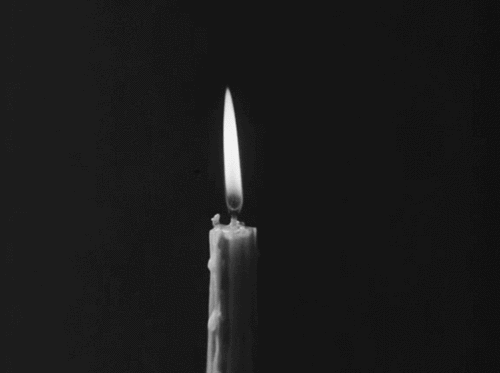
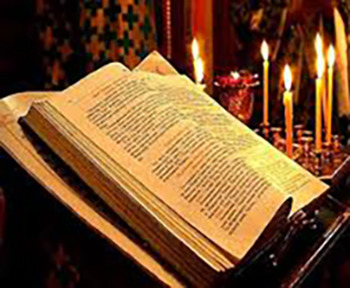
ROMANS 11:2-12
2 God has not cast away His people whom He foreknew. Or do you not know what the Scripture says of Elijah, how he pleads with God against Israel, saying, 3 LORD, they have killed Your prophets and torn down Your altars, and I alone am left, and they seek my life? 4 But what does the divine response say to him? "I have reserved seven thousand men who have not bowed the knee to Baal." 5 Even so then, at this present time, there is a remnant according to the election of grace. 6 And if by grace, then it is no longer of works; otherwise, grace is no longer grace. But if it is of works, it is no longer grace; otherwise, work is no longer work.7 What, then? Israel has not obtained what it seeks, but the elect have received it, and the rest were blinded. 8 Just as it is written: "God has given them a spirit of stupor, Eyes that they should not see And ears that they should not hear, To this very day." 9 And David says: "Let their table become a snare and a trap, A stumbling block and a recompense to them. 10 Let their eyes be darkened, so that they do not see, And bow down their back always." 11 I say then, have they stumbled that they should fall? Certainly not! But through their fall, salvation has come to the Gentiles to provoke them to jealousy. 12 Now if their fall is riches for the world, and their failure riches for the Gentiles, how much more their fullness!
JOHN 10:9-16
9 I am the door. If anyone enters by Me, he will be saved and will go in and out and find pasture. 10 The thief does not come except to steal, kill, and destroy. I have come that they may have life and have it more abundantly. 11 I am the good shepherd. The good shepherd gives His life for the sheep. 12 But a hireling, he who is not the shepherd, one who does not own the sheep, sees the wolf coming and leaves the sheep and flees; and the wolf catches the sheep and scatters them. 13 The hireling flees because he is a hireling and does not care about the sheep. 14 I am the good shepherd, and I know My sheep and am known by My own. 15 As the Father knows Me, even so, I know the Father and lay down My life for the sheep. 16 And other sheep I have which are not of this fold; also I must bring, and they will hear My voice; and there will be one flock and one shepherd.
#orthodoxy#orthodoxchristianity#easternorthodoxchurch#originofchristianity#spirituality#holyscriptures#gospel#bible
7 notes
·
View notes
Note
Would you consider Svarog to be a phantom deity ? I think there is only one source that mentions him ( correct me if I’m wrong) and I’ve heard people say that he was created as a Slavic version of the Greek god Hephaestus. I don’t have any source for this but it is something I’ve heard some people say.
Hello!
That’s right, there’s only one source that mentions Svarog. However he wasn’t necessarily created as a Slavic version of Hephaestus, the story is a little more complicated than that.
In the entry for year 1114 of the Tale of Bygone Years the author includes a translated fragment of a Byzantine chronicle with a glossa that equates Hephaestus to Svarog and Helios to Daždbog. The Byzantine chronicle in question was originally writen in Greek by John Malalas, who was in turn drawing heavily from 3rd century BC „Egyptian History” by Manetho. In Malalas’ text names of Egyptian deities were replaced by the Greek gods viewed as their counterparts, so Ptah became Hephaestus and Ra became Helios. It’s believed that the glossa adjusted the names one more time, in the same fashion, so that they resonate with local readers. And thus we came to view Svarog as the god of fire and smithing similar to Hephaestus and Daždbog as the god of the sun akin to Helios.
We don’t actually know if the glossa was contributed by the translator of the Byzantine text into Slavonic (who was most likely Bulgarian according to Gieysztor) or by the author of the Tale of Bygone Years. So we don’t know in what year or in which region it was created either and we can’t say much about how familiar the writer was with pagan customs of Rus. It’s very likely that the author was a Christian monk.
Dažbog appears in the Tale of Bygone Years a few more times, most notably in an earlier entry for year 980 where he is mentioned as part of kniaz’ Volodymyr’s state pantheon of pagan gods.
„And Vladimir began to reign alone in Kiev. And he placed idols on the hill outside the palace: a Perun in wood with a silver head and a gold moustache, and Khors and Daždbog and Stribog and Simargl and Mokoš. And they offered sacrifices and called them gods, and they took their sons and daughters to them and sacrificed them to the devils. And they profaned the earth with their sacrifices, and Rus’ and that hill were profaned by blood. But God the merciful, who does not wish the death of sinners, on that hill stands today the church of Saint Vasilij, as we will relate later.”
„Then, during the reign of Oleg, son of the Unfortunate, the seed of discord was sown and flourished, the life of the son of Dažbog was extinguished, amid the internal struggles of the princes, curtailing their future generations.”
„The troops of the son of Dažbog were overcome with sorrow, humiliation entered the lands of Trojan”
- Tale of Bygone Years via Sources of Slavic Pre-Christian Religion, red. J. A. Álaverez-Pedrosa
He is also mentioned in passing in „Sermon by the Holy Father Saint John Chrysostom”.
*The varied spelling of his name as either „Daždbog” or „Dažbog” I lifted directly from the „Sources of Slavic Pre-Christian Religion” that I’m relying on for both the original text of the sources and their English translations.
Svarog does not appear again in any of the writings we know of — but Svarožic does. Svarožic is one of the best attested Slavic deities and the only one found in primary sources from more than one group of Slavs — we found mentions of him in both the primary sources about Polabian Slavs and in the homiletic works of Kyivan Rus.
To the best of my knowledge he is mentioned in:
Letter to Emperor Henry II from Bruno of Querfurt,
The Chronicle of Thietmar of Merseburg,
„Deeds of Bishops of the Hamburg Church” by Adam of Bremen (where he appears as Redigast, though the description of him and the town where he is worshipped matches the one by Thietmar, leading some slavists to view the name as an error and others as an epithet derived from the main place of worship),
„Sermon by Saint Gregory, Found in the Comments, on How the Ancient Nations, When Pagan, Worshipped Idols and Offered Sacrifices to Them, and Continue to Do So Now”,
„Sermon by the Holy Father Saint John Chrysostom, Archbishop of Constantinople, on How the First Pagans Believed in Idols”,
„Sermon by One Who Loves Christ and Is a Jealous Defender of the Righteous Faith”.
The name Svarožic is usually interpreted in one of two ways:
- as a patronymic meaning „the son of Svarog”,
- as a diminutive meaning „Little Svarog”.
Feel free to come to your own conclusions.
Now as to what I personally think about Svarog (please keep in mind that I have no formal education in slavic studies, and that my opinions may change in the future as a result of my personal research), well in my own practice I currently view him and Svarožic as the same deity, to which I refer as Svarožic. I decided to do so because this form is much better attested. Additionally I subscribe to the theory that the name Svarožic may have been used as a diminutive to avoid a taboo on pronouncing the true name of the deity. Although in my best hypocritical fashion I do not refer in diminutives to Perun about whom similar theories were put forward. In general the name taboos in Slavic culture are a very broad and fascinating subject that I couldn’t possibly summarize in here. To finish off I will note that there are many slavists who believe Svarožic to be the son of Svarog and also many who believe them to be one — so we are given a chance to make up our own minds and follow whatever the hell feels right to us personally.
Sources: Sources of Slavic Pre-Christian Religion, red. J. A. Álaverez-Pedrosa, Mitologia Słowian by Aleksander Gieysztor, Dawni Słowianie - wiara i kult by Stanisław Urbańczyk, Slavic Gods and Heroes by Kalik and Uchitel.
33 notes
·
View notes
Text
Bulgarians across the country observed the Day of Saint Nicholas on December 6, known as Nikulden, commemorating the revered figure of St. Nicholas of Myra. Originating from Patara in Asia Minor in the 3rd century, St. Nicholas led a pious life, aiding the destitute and weak while embodying the principles of faith and truth. Eventually, he became the Bishop of Myra and, upon his passing in 342, his relics were transferred to the city of Bari, Italy, where they remain preserved to this day.
St. Nicholas holds a special place in Bulgarian tradition, revered as the patron saint of travelers, sailors, and fishermen. Folklore envisions him commanding storms and the sea, often depicted sailing on a golden ship. One legend tells of him rescuing a sinking boat by plugging a hole with a carp.
For fishermen, Nikulden marks the conclusion of autumn fishing, celebrated through a bountiful feast brimming with fish dishes. The saint's influence extends to boat building, where it's believed placing an icon of St. Nicholas protects sailors from tempests.
Superstitious beliefs link St. Nicholas to miraculous acts, including leaving coins for the needy, similar to the tale where he aided a destitute father struggling to provide dowries for his daughters. Hence, the holiday holds significance for bankers as well.
In honor of St. Nicholas, the Bulgarian Orthodox Church conducts special liturgies, sanctifying fish dishes for the well-being of the faithful. Traditionally, a festive table is arranged featuring fish, often stuffed carp, with rice, walnuts, and onions.
Those bearing names associated with St. Nicholas - Nikola, Nikolina, Nikolay, Nina, and more - also celebrate on this day, which is additionally esteemed in the city of Burgas.
Modern-day customs emphasize festive gatherings and fish-laden meals as a tribute to the revered saint. St. Nicholas Day resonates as a cherished occasion of faith and festivity across Bulgaria.
2 notes
·
View notes
Text
Today the Church remembers the Martyrs of Adrianople
Orate pro nobis.
The Martyrs of Bulgaria were three hundred and seventy seven Christian children, women, and men who were executed in AD 815 as part of border wars between the pagan Bulgars and the Byzantine Empire.
Emperor Nikephoros I invaded Bulgaria and sacked the capital of Pliska in AD 811, but was killed and his army annihilated at the Battle of Varbitsa Pass as he returned to Roman territory. Khan Krum's peace offer was rejected by Emperor Michael I Rangabe, and the Bulgarians invaded the Roman Empire in the spring of 812. Khan Krum conquered Develtos and transplanted its population to Bulgaria in June, and seized Adrianople in September AD 813. At Adrianople, Krum threw Manuel, Archbishop of Adrianople, to the ground and trampled on his neck.
According to the Menologion of Basil II, Khan Krum began the persecution of Christians prior to his death and was continued by a certain khan Čok (Tzok) who had all Christians who refused to renounce their faith executed. However, the Synaxarion of Constantinople states that the persecution began after Krum's death in April AD 814 on the orders of Khan Dičevg, the successor of Dukum, who had ruled briefly after Krum's death. Omurtag later became khan and ordered the execution of all Christians who refused to renounce their faith. Three hundred and seventy seven Christians were killed, and the following are known by name:
Manuel, Archbishop of Adrianople – The synaxarion records that Dičevg had Manuel cut in two, cut off his arms, and fed his remains to dogs; afterwards, Dičevg was afflicted with blindness and was killed by his own soldiers. The menologion states that Krum had Manuel killed, and subsequently became blind and was strangled by his soldiers.
George, Archbishop of Develtos – George had negotiated the surrender of Develtos to Krum in 812, and had been transplanted to Bulgaria with the city's population. He was clubbed to death and decapitated.
Leo, Bishop of Nicaea in Thrace – Leo had his stomach cut open.
Peter, bishop – He was clubbed to death and decapitated.
John, strategos – A renegade, John had served under Tuk with Bardanes on the Bulgarian right flank during the Battle of Versinikia,but was beheaded for his faith.
Leo, strategos – A renegade, Leo had served under Krum's brother at the centre of the Bulgarian army during the Battle of Versinikia, and was beheaded.
Parodos, priest – He was stoned to death.
Gabriel and Sionios – They were both beheaded.
Loubomiros and Chotomiros – Slavs, they are named in a canon composed by either Saint Joseph the Confessor or Saint Joseph the Hymnographer. Their martyrdom indicates the spread of Christianity amongst the Slavs of Bulgaria.
Koupergos and Asfir – They may have been Christian Bulgars given their names.
An original account of the martyrs was likely made based on the testimonies of prisoners of war released by Bulgaria after the Treaty of AD 816 in the first half of the 9th century AD at the Monastery of Stoudios at Constantinople which the menologion and synaxarion are based on.
Almighty God, by whose grace and power your holy martyrs of Bulgaria triumphed over suffering and were faithful even to death: Grant us, who now remember them in thanksgiving, to be so faithful in our witness to you in this world, that we may receive with them the crown of life; through Jesus Christ our Lord, who lives and reigns with you and the Holy Spirit, one God, forever and ever.
Amen.
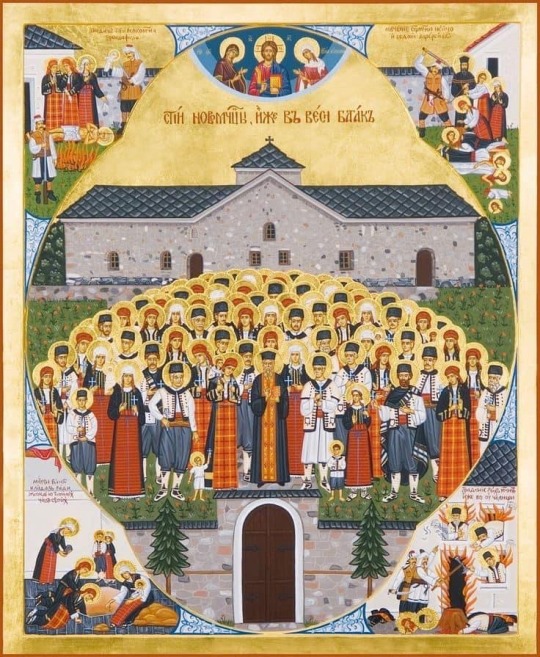
#father troy beecham#christianity#jesus#saints#god#salvation#peace#martyrs#faith#christian persecution
2 notes
·
View notes
Photo
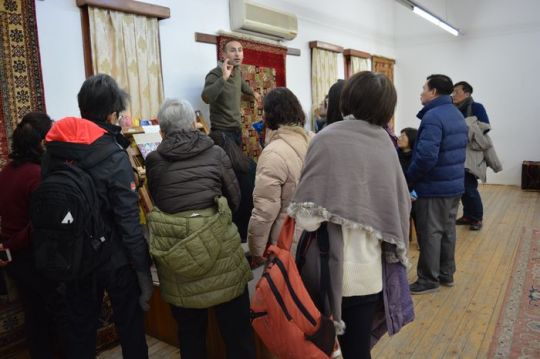
The Cycle of Violence Bulgarian and Greek Bands in Macedonia
Coercive Conversions
In the turbulent landscape of Macedonia, villages often found themselves caught in the crossfire between Bulgarian and Greek bands vying for control. Villagers, seeking peace, would yield to the demands of whichever band was currently in power. As a result, they would switch their allegiance from Bulgarian to Greek or vice versa, depending on the prevailing force in their area.
Intimidation Tactics
When one band withdrew, the opposing faction would swoop in to “reconvert” the village to their cause. This cycle of coercion and intimidation continued, with each band resorting to violence to enforce their dominance. Greek bands would threaten Bulgarian villages with violence and arson if they refused to convert to Greek Orthodoxy, while Bulgarian bands retaliated in kind, aiming to protect Bulgarian villages from Greek influence.
Religious Leaders’ Involvement
Compounding the violence, religious leaders from both sides actively encouraged and sanctioned these brutal tactics. Greek bishops and priests urged their followers to use murder and arson as means of compelling Bulgarian Macedonians to declare themselves Greeks. Similarly, Bulgarian bands were excused as necessary protectors of Bulgarian villages from Greek aggression Private Tours Balkan.
High Patriotic Mission or Vermin Extermination?
Both Bulgarian and Greek bands justified their actions as part of a noble patriotic mission. They saw themselves as defenders of their respective identities and believed that the opposing side deserved extermination. Despite the flagrant violence and atrocities committed, reason fell on deaf ears as both sides remained entrenched in their beliefs, perpetuating a cycle of burning houses and murdering partisans at a rate surpassing even the atrocities witnessed during the times of Turkish rule.
The conflict between Bulgarian and Greek bands in Macedonia exemplifies the destructive consequences of ethnic and religious strife. Despite their claims of patriotism, both sides resorted to violence and coercion, leading to widespread suffering and bloodshed among innocent villagers. As long as this cycle of violence continues unchecked, the prospect of peace and stability in Macedonia remains elusive.
0 notes
Text
Jaune: The main thing that puts me off of playing chess is that there is 2000 years of gameplay that hundreds of people with higher IQs than me have spent thousands of hours studying the history of, so much so that when i put the pawn forward they say "ah ii see you're going for the bulgarian somersault" and then i try to take their bishop with my knight and they go "aw, rookie mistake, you've played the frenchmans cumsock, and in approximately 37 moves I'll have won".
34 notes
·
View notes
Text
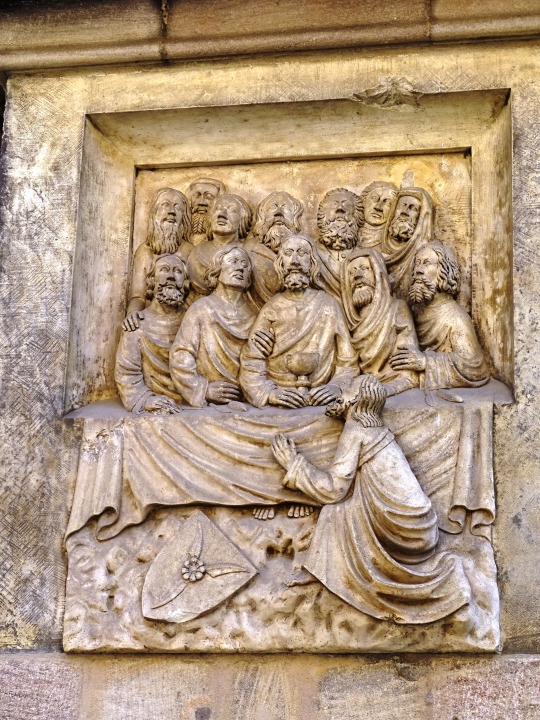

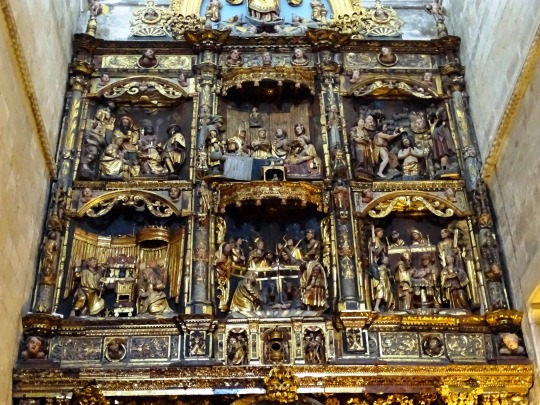



Maundy Thursday
Christians mark Maundy Thursday, which commemorates the Last Supper, every year on the Thursday before Easter, March 28. It’s also know as Holy Thursday, Covenant Thursday, and the Thursday of Mysteries in various traditions.
Maundy refers to the foot-washing Jesus provided the apostles prior to the Last Supper. Christians around the world, especially Catholics, mark the day with a special mass and prayers.
The word “Maundy” itself comes from an Anglo-French word derived from the Latin “mandatum,” which means “commandment.”
Maundy Thursday timeline
2019
Honoring Notre Dame
UK Prime Minister Theresa May announced bells will ring at cathedrals across England on Maundy Thursday. It's a show of support for France following the devastating Notre Dame fire.
1979
The Chrism
The Book of Common Prayer was published in Britain calling for the Chrism Mass to be consecrated by Anglican Bishops.
1945
The bombing of Manila
Maundy Thursday in the Philippines commemorates the seven churches that were destroyed when Manila was bombed in 1945.
1822
Maundy coins
In the United Kingdom, the Church of England created Maundy Coins, handed to parishioners to mark Maundy Thursday. The coins replaced the real currency that was previously given to parishioners as charity.
How to Observe Maundy Thursday
Go to church: Christian churches celebrate with a special mass and prayers. Even if you're not a Christian or a believer, you can learn a lot about one of the more important days on the Christian calendar by visiting a local Christian church.
Learn the story: Holy Wednesday and Maundy Thursday represent the beginning of the transformational story of the death and resurrection of Jesus. We're all better off if we deepen our understanding of the faith traditions of others. Pick up a book or watch a documentary that highlights the importance of Maundy Thursday within Christianity.
Spend the day being humble: Maundy Thursday is a great opportunity to remind ourselves of the importance of humility. Regardless of your own faith traditions, use Maundy Thursday to check yourself throughout the day for signs that you could always use a bit more humility in your life.
Maundy Thursday Around The World
Czech Republic and Slovakia: Maundy Thursday in local parlance translates to Green Thursday, when meals are prepared primarily from fresh, green vegetables.
Kerala State, India: Unleavened Pehasa bread is made in homes and consumed with coconut milk.
Sweden: Maundy Thursday is connected to old folklore as the day of the witches. Similar to Halloween, children dress up as witches and go door-to-door collecting coins or candy.
Bulgaria: Bulgarians color Easter eggs and clean their houses in preparation for what they call Crucifixion Friday.
Luxembourg: Church bells fall silent on Maundy Thursday until Easter, marking a symbolic migration to Rome for confession.
Why Maundy Thursday is Important
Strong traditions: Holy Week is one of the more important celebrations on the Christian Calendar, and Maundy Thursday is a key day of the week. Christian traditions from around the globe, from Armenia to Africa to Germany, mark the day with special masses and prayers.
It celebrates humility: The washing of the disciples' feet by Jesus was intended to be a sign of humility. Jesus was humbling himself before his own servants as a last gesture before knowing he was to be crucified. Masses on this day now highlight the importance of humility in the Christian faith.
It ties Christian denominations together: Christian faiths celebrate Maundy Thursday throughout the world. Part of its tradition, which carries into Good Friday, is for observers to visit 14 different Christian churches, one for each station of the cross. It unifies the Christian church regardless of region or country.
Source
#Maundy Thursday#Gründonnerstag#Thursday before Easter#28 March 2024#Covenant Thursday#Cathedral of St John the Baptist#Charleston#Sebalduskirche#Nuremberg#Nürnberg#Bavaria#Bayern#South Carolina#Germany#Deutschland#Spain#España#Lugo#Cathedral of Santa María#USA#Jesus Christ’s Last Supper#religion#original photography#interior#exterior#Lugo Cathedral#vacation#travel#architecture#tourist attraction
0 notes
Text
New Post has been published on Mirela
The National Revival
Struggles for Identity and Independence
Father Paisi’s Call to Remember (1762)
Amid the dark period of Bulgarian history, an unknown Bulgarian monk named Father Paisi emerged at the Mt. Athos monastery. Distressed by the rapid loss of Bulgarian identity, he wrote the first Bulgarian history, aiming to revive the glories of Bulgaria’s past when Bulgarian kings defeated Byzantium. Father Paisi’s history, completed in 1762, emphasized pride in being Bulgarian.
Dual Aspirations: Church Independence and Political Freedom
Bulgarian national aspirations focused on two goals: church independence and political freedom. Initially modest, the Bulgarians sought bishops who spoke Bulgarian and later requested Bulgarian bishops. Ultimately, their goal was an independent Bulgarian Church. The Greek Orthodox Patriarchy opposed these requests, desiring control over the Bulgarian Church. However, the Ottoman Empire ruling hierarchy did not hinder the Bulgarian national revival. In 1871, the Turkish recognition of an independent Bulgarian Church led to the establishment of the Bulgarian Exarchate, despite opposition from the Greek Orthodox Patriarchy City Tours Istanbul.
Political Liberation Movement
Simultaneously, a revolutionary movement for political liberation gained momentum, centered in Romania. The Ottoman Empire’s decline and the rising aspirations of the subjugated Slavic peoples prompted uprisings, notably one brutally crushed in Bulgaria in 1876. The “Bulgarian Massacres” spurred diplomatic intervention by England and Russia. At the Treaty of San Stefano, Bulgaria gained favorable terms, but the subsequent Berlin Congress divided Bulgaria into three parts: Bulgaria proper, Eastern Rumelia as an autonomous province, and Macedonia and Thrace under Turkish control.
Russo-Turkish War and Division (1877-1878)
In response to the failure of the Berlin Congress agreements, Russia declared war on Turkey in the Russo-Turkish War of 1877-1878. England supported Turkey due to concerns about its ship rights in the Balkan Straits. The Treaty of San Stefano was replaced by the Berlin Congress, dividing Bulgaria into three parts, complicating the path to Bulgarian autonomy and independence.
0 notes
Photo

The National Revival
Struggles for Identity and Independence
Father Paisi’s Call to Remember (1762)
Amid the dark period of Bulgarian history, an unknown Bulgarian monk named Father Paisi emerged at the Mt. Athos monastery. Distressed by the rapid loss of Bulgarian identity, he wrote the first Bulgarian history, aiming to revive the glories of Bulgaria’s past when Bulgarian kings defeated Byzantium. Father Paisi’s history, completed in 1762, emphasized pride in being Bulgarian.
Dual Aspirations: Church Independence and Political Freedom
Bulgarian national aspirations focused on two goals: church independence and political freedom. Initially modest, the Bulgarians sought bishops who spoke Bulgarian and later requested Bulgarian bishops. Ultimately, their goal was an independent Bulgarian Church. The Greek Orthodox Patriarchy opposed these requests, desiring control over the Bulgarian Church. However, the Ottoman Empire ruling hierarchy did not hinder the Bulgarian national revival. In 1871, the Turkish recognition of an independent Bulgarian Church led to the establishment of the Bulgarian Exarchate, despite opposition from the Greek Orthodox Patriarchy City Tours Istanbul.
Political Liberation Movement
Simultaneously, a revolutionary movement for political liberation gained momentum, centered in Romania. The Ottoman Empire’s decline and the rising aspirations of the subjugated Slavic peoples prompted uprisings, notably one brutally crushed in Bulgaria in 1876. The “Bulgarian Massacres” spurred diplomatic intervention by England and Russia. At the Treaty of San Stefano, Bulgaria gained favorable terms, but the subsequent Berlin Congress divided Bulgaria into three parts: Bulgaria proper, Eastern Rumelia as an autonomous province, and Macedonia and Thrace under Turkish control.
Russo-Turkish War and Division (1877-1878)
In response to the failure of the Berlin Congress agreements, Russia declared war on Turkey in the Russo-Turkish War of 1877-1878. England supported Turkey due to concerns about its ship rights in the Balkan Straits. The Treaty of San Stefano was replaced by the Berlin Congress, dividing Bulgaria into three parts, complicating the path to Bulgarian autonomy and independence.
0 notes
Photo
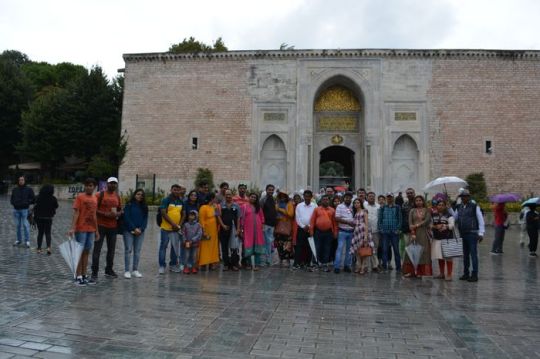
The National Revival
Struggles for Identity and Independence
Father Paisi’s Call to Remember (1762)
Amid the dark period of Bulgarian history, an unknown Bulgarian monk named Father Paisi emerged at the Mt. Athos monastery. Distressed by the rapid loss of Bulgarian identity, he wrote the first Bulgarian history, aiming to revive the glories of Bulgaria’s past when Bulgarian kings defeated Byzantium. Father Paisi’s history, completed in 1762, emphasized pride in being Bulgarian.
Dual Aspirations: Church Independence and Political Freedom
Bulgarian national aspirations focused on two goals: church independence and political freedom. Initially modest, the Bulgarians sought bishops who spoke Bulgarian and later requested Bulgarian bishops. Ultimately, their goal was an independent Bulgarian Church. The Greek Orthodox Patriarchy opposed these requests, desiring control over the Bulgarian Church. However, the Ottoman Empire ruling hierarchy did not hinder the Bulgarian national revival. In 1871, the Turkish recognition of an independent Bulgarian Church led to the establishment of the Bulgarian Exarchate, despite opposition from the Greek Orthodox Patriarchy City Tours Istanbul.
Political Liberation Movement
Simultaneously, a revolutionary movement for political liberation gained momentum, centered in Romania. The Ottoman Empire’s decline and the rising aspirations of the subjugated Slavic peoples prompted uprisings, notably one brutally crushed in Bulgaria in 1876. The “Bulgarian Massacres” spurred diplomatic intervention by England and Russia. At the Treaty of San Stefano, Bulgaria gained favorable terms, but the subsequent Berlin Congress divided Bulgaria into three parts: Bulgaria proper, Eastern Rumelia as an autonomous province, and Macedonia and Thrace under Turkish control.
Russo-Turkish War and Division (1877-1878)
In response to the failure of the Berlin Congress agreements, Russia declared war on Turkey in the Russo-Turkish War of 1877-1878. England supported Turkey due to concerns about its ship rights in the Balkan Straits. The Treaty of San Stefano was replaced by the Berlin Congress, dividing Bulgaria into three parts, complicating the path to Bulgarian autonomy and independence.
0 notes
Photo
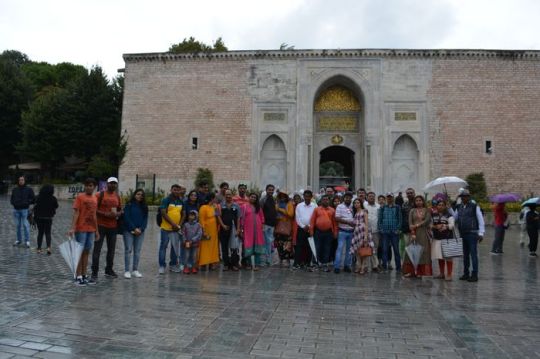
The National Revival
Struggles for Identity and Independence
Father Paisi’s Call to Remember (1762)
Amid the dark period of Bulgarian history, an unknown Bulgarian monk named Father Paisi emerged at the Mt. Athos monastery. Distressed by the rapid loss of Bulgarian identity, he wrote the first Bulgarian history, aiming to revive the glories of Bulgaria’s past when Bulgarian kings defeated Byzantium. Father Paisi’s history, completed in 1762, emphasized pride in being Bulgarian.
Dual Aspirations: Church Independence and Political Freedom
Bulgarian national aspirations focused on two goals: church independence and political freedom. Initially modest, the Bulgarians sought bishops who spoke Bulgarian and later requested Bulgarian bishops. Ultimately, their goal was an independent Bulgarian Church. The Greek Orthodox Patriarchy opposed these requests, desiring control over the Bulgarian Church. However, the Ottoman Empire ruling hierarchy did not hinder the Bulgarian national revival. In 1871, the Turkish recognition of an independent Bulgarian Church led to the establishment of the Bulgarian Exarchate, despite opposition from the Greek Orthodox Patriarchy City Tours Istanbul.
Political Liberation Movement
Simultaneously, a revolutionary movement for political liberation gained momentum, centered in Romania. The Ottoman Empire’s decline and the rising aspirations of the subjugated Slavic peoples prompted uprisings, notably one brutally crushed in Bulgaria in 1876. The “Bulgarian Massacres” spurred diplomatic intervention by England and Russia. At the Treaty of San Stefano, Bulgaria gained favorable terms, but the subsequent Berlin Congress divided Bulgaria into three parts: Bulgaria proper, Eastern Rumelia as an autonomous province, and Macedonia and Thrace under Turkish control.
Russo-Turkish War and Division (1877-1878)
In response to the failure of the Berlin Congress agreements, Russia declared war on Turkey in the Russo-Turkish War of 1877-1878. England supported Turkey due to concerns about its ship rights in the Balkan Straits. The Treaty of San Stefano was replaced by the Berlin Congress, dividing Bulgaria into three parts, complicating the path to Bulgarian autonomy and independence.
0 notes